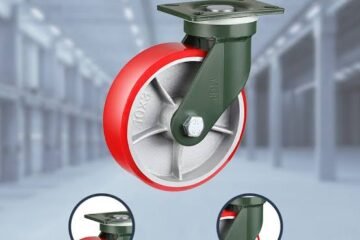Transmission or engine jacks are pneumatic or hydraulic lifting tools used to support the weight of a transmission. These jacks are required to hold the transmission safely and securely during installation, maintenance, or removal. Although each jack is different, they all have safety features to reduce the likelihood of accidents and injuries. Here’s more information about six transmission jack safety features:
1. Safety and Operating Instructions
Heavy-duty jacks and lifting equipment come with detailed instructions from the manufacturer. These guidelines cover how to safely and properly use the transmission jack to prevent accidents and injuries. Safety and operation instructions explore everything from personal protective equipment to hazard checklists. This helps you learn more about potential hazards, pre-operational inspections, precautions, maintenance, operation, cleaning, and storage.
2. Emergency Brakes and Pump Valves
Jacks used to lift transmissions feature emergency brakes that you can turn on or off. Keep the brakes on when using the jack to lock it in position. Prepare the surface where the jack’s base sits to keep it level and free of obstructions. Use jack stands if you want to lift the car higher to provide room for your jack. These mitigations help to prevent the car and jack from rolling and toppling. Some transmission and engine jacks also feature metered pump valves designed to provide safe and controlled load lowering.
3. Hands-free Hydraulic Foot Pumps
Some jacks feature hand pumps with extended levers to reduce the risk of injury in case of an accident during lifting and lowering. Other jacks use air or hydraulic foot pumps that provide hands-free operation. Foot pumps are easy and convenient to use. These pumps also provide gradual movements, giving you more control when lifting and lowering the equipment onto a dolly or stand. A mobile base also allows you to move the jack within your shop or garage with the equipment secured on the lifting platform.
4. Safety Overload Prevention Systems
Each jack has a lifting capacity rating that limits the standard load you can lift using the tool. When using an engine jack, confirm this capacity to avoid issues that may stem from overloading the equipment. Some jacks have a built-in safety overload system that prevents you from using the jack beyond the set standards. If your jack doesn’t have this feature, learn the capacity from the safety instructions. Find out the weight of the transmission and use a jack designed to support that weight.
5. Fully Adjustable Fastening Saddles
Before lifting a transmission block, secure it to the lifting platform attached to the jack. Transmission and engine jacks feature adjustable straps and universal saddles to help you fasten the equipment to the jack. Some saddles use corner brackets and safety chains wrapped around the transmission. Fastening chains and straps prevent the engine block from slipping out of the jack’s lifting platform during operation. Keep the chains and straps firmly fastened before you start lifting or lowering the transmission.
6. Chromed Plating and Coated Frames
Transmission lifting tools are usually made of steel and thick iron, which is prone to rust. The jacks are also used in environments exposed to moisture, liquid spills, and dust. To prevent these elements from affecting the jack’s performance, manufacturers can use flash chrome plating and coated frames. The chromed plating prevents rust from entering the hydraulic system. Frame coatings slow down the formation of rust and create a surface that’s easier to wipe and clean. These measures protect your jack from premature breakdowns and unforeseen accidents.
Use a Heavy-duty Transmission Jack Today
Heavy-duty jacks have many safety features, but to prevent accidents, you still need personal protective equipment and a clean working environment. Stay alert, activate the vehicle’s emergency brakes, and follow the safety instructions. Contact an experienced specialty tool supplier today to find the right transmission jack for your needs.



